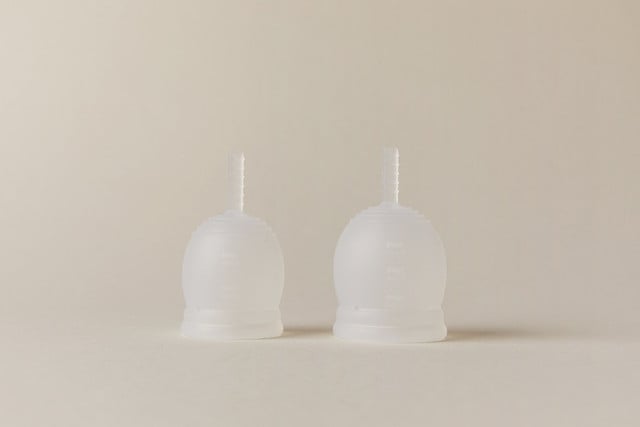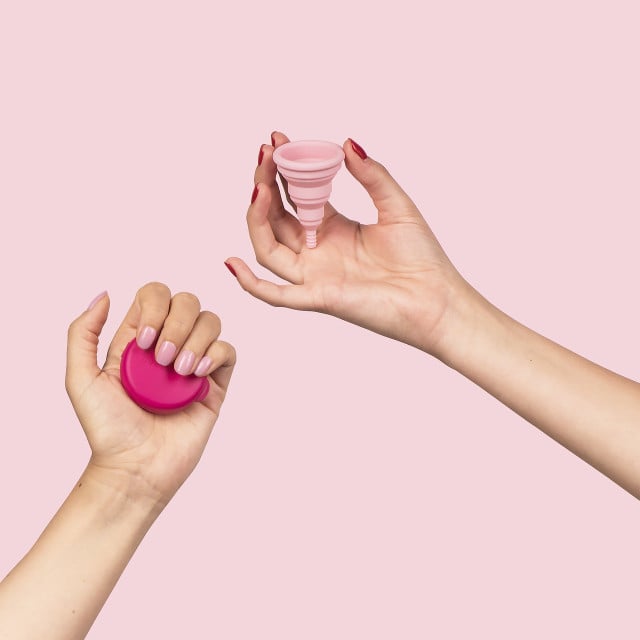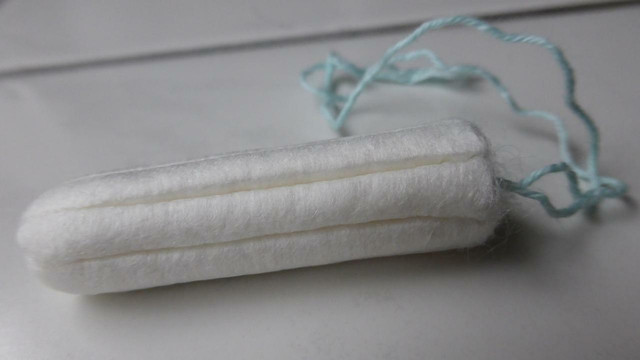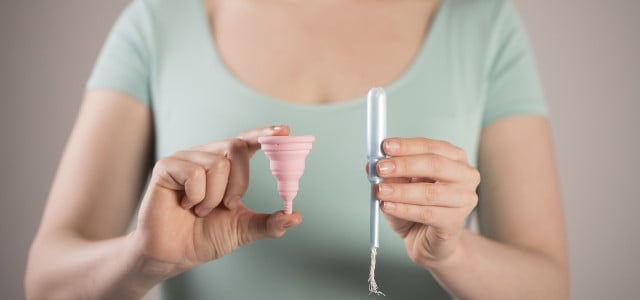Disposable sanitary products usually end up in landfills or on our beaches. But there are a range of tampon alternatives available which are better for the environment.
Many people who menstruate will do so for around forty years of their life – that means a whole lot of disposable menstruation products going to landfill. And what are these products made of? Tampons contain cotton and/or rayon and up to 6% plastic (not including the applicators), while some estimates say sanitary pads contain a whopping 90% plastic. Applicators and the string of tampons are the parts that contain the most plastic. It takes decades for these single use products to break down, adding to the problem.
This means thousands of sanitary products may go to the landfill in a person’s lifetime. It contributes to the increasing problem of landfills getting full. Disposable tampons are often flushed down the toilet and as a result can end up on our beaches or in our waterways. The applicators can also break up into smaller pieces, called microplastics, which then get consumed by marine life, causing them huge health problems. Single-use, disposable products create huge problems as they add to landfills; even biodegradable items take some time to decompose.
Although sanitary products can be incinerated, there is also the issue of pollutants omitted during the incineration process.
Let’s not forget about climate change. Disposable sanitary products have a huge carbon footprint. A lot of energy is used in the production process and the majority of this energy is produced from fossil fuels. Also, sending these products to the landfill contributes to the methane emissions created by landfills. The microorganisms at the dumps form the methane, which is then released during the transportation phase of processing.
There are various alternatives to disposable tampons and sanitary products. The guide below will inform you about green living when it comes to your period, and how to reduce the amount of single use products that you use.
Risks of DIY Tampons
We’ve all been caught with no sanitary products left in the drawer when that time of the month surprises us. One quick solution is to put toilet paper in our underwear until we can go to the store to buy some tampons or pads.
But have you ever thought about making your own tampon? Perhaps for price or convenience, some people have tried making their own DIY tampons. It is even seen as a handicraft on some social media sites. However, doctors have advised against using homemade products instead of the real thing. They have warned that their use could lead to infection or the materials could even partially disintegrate inside you.
Using DIY tampons can cause toxic shock syndrome (TSS) caused by a bacterial infection and can lead to death. Using homemade tampons increases this risk of TSS as these tampons are not as sterile as regular tampons and have not been through the same rigorous testing process.
Below you will find a guide on the best sustainable alternatives to tampons that are safe and easy to use.
1. Menstrual Cup



A menstrual cup (available on Amazon**) is a silicone based, cup-shaped item which is inserted into the vagina during your period. You fold it in on itself before inserting, so it then opens up after insertion. The cup collects your menstrual blood, you then gently pull the end of the cup to remove it and pour the contents down the toilet. Simply wash the cup and use it again!
Ideally it should be washed in boiling water with soap. This may not be possible, so if you’re not at home a rinse is suitable. Learn more about how to clean your menstrual cup the natural way.
2. Period Panties Are Hassle-Free Tampon Alternative



Period panties look like regular panties, but they are designed with absorbent layers. This means you don’t need to wear any other sanitary products and there are no leaks. After wearing, simply rinse in cold water, in the washing machine or hand wash as normal and air dry. There are many different designs and sizes available to suit everyone. One brand available on Amazon**, Modibodi, even have a range for tweens and teens.
3. Reusable Sanitary Pads
They are the same shape as disposables, but they’re made from fabric that can be washed and used again. They come with a button to secure the pad in place and there are range of sizes available to suit your flow. You can choose from a variety of cute and colourful designs. GladRags, available on Amazon**, have an organic cotton and bamboo fiber range. To wash simply soak in cold water and then machine wash on a cool setting.
4. Reusable Menstruation Disc as an Alternative to Tampons



The menstrual disc is slightly smaller than the menstrual cup, but works in a similar way. It is folded and inserted, but the positioning is slightly different to the cup, this means that it’s possible to have sex while using it. Clean in the same way as the menstrual cup after disposing of the contents in the toilet. Lumma, available on Amazon**, have a range of colours and three sizes available.
5. Organic Tampons



If those alternatives are not for you and you’d like to stick with tampons, check out our list of best organic tampon brands. In general, most organic tampons use 100 percent organic cotton, which makes them biodegradable, apart from the string.
The plastic applicator is usually not biodegradable. So there are less chemicals in organic tampons, making them better for the environment and they will help to reduce your carbon footprint.
Read more:
- Take Action: 15 Everyday Ways to Combat Climate Change
- Zero Waste Travel: Green Living on the Road
- Herbal Remedies: 5 Yarrow Benefits and Uses
Important Information regarding Health-related Topics.
** Links to retailers marked with ** or underlined orange are partially partner links: If you buy here, you actively support Utopia.org, because we will receive a small part of the sales proceeds. More info.Do you like this post?







